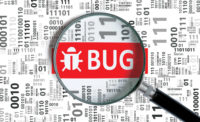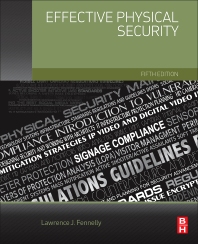Security:What about PCI DSS?
Ting:For any organization that handles card-based payments, the Payment Card Industry Data Security Standard (PCI DSS) looms large over their IT strategies. Complying with this standard requires a thorough evaluation of the organization’s security planning, as well as how the IT department approaches areas such as patching, storage of sensitive information and business continuity.
Security:What about physical access control?
Ting:The physical security of an organization’s data also has to be considered. Section 9.1 of the PCI DSS standard states that organizations must “Use appropriate facility entry controls to limit and monitor physical access to systems that store, process, or transmit cardholder data.” This requires a full overview of how individuals within the company access data, not only through applications but also the physical media that the data is stored on.
Within most companies that are going through PCI compliance projects at the moment, this section of the standard will be covered by getting workers to sign up to an agreed document on security policy. This basically means that the employee is made aware of their responsibilities, and that by signing up to this arrangement they promise not to break the rules.
Security:What about the stealing of data or use without authorization?
Ting:While employee sign-off on the security policy will cover law-abiding members of staff in most circumstances, it does not protect against the threat of internal data being stolen or released without authorization. An example of this would be where an employee has been able to steal credit card data and sell it. Even if the company does go through the process with staff, there is also no way for the company to prove that it is meeting its compliance requirements without a huge amount of work.
To really meet the requirements of this section of the standard, a “converged” approach will be required: Instead of separate solutions for physical and IT security, organizations affected by PCI DSS will have to create a single infrastructure to cover both sectors. Creating this across network and physical access to assets ensures that only authorized users can get access to information via the network as well as defining physically where these users can gain right of entry to data. This “location-based authentication” requires an overview of the entire environment.
Security:Are things already coming together?
Ting:The convergence of security is already taking place in the physical world. Organizations are moving toward using IP-based security video and door access systems on their IT networks. IT is being asked to support the network side of these products, while the facilities management team is being required to take greater care around who can gain access to sensitive computer equipment within specific areas of the building. Posts with responsibility for both physical and IT security are being created to handle information security and to control risk.
Security:What will accelerate this process?
Ting:The ability to define security policies around both IT and physical security: using an employee’s network log-in and correlating it with their identity within a physical access system means that the company can apply policies around how a user is allowed to use information.
An example of this might be enforcing signing into the physical access system in the morning: If a user forgets to authenticate themselves, there is no record in the building access database. If they have the right network credentials, they will be granted onto the IT system. In a converged security environment, the network ID is correlated with a badge number and the building access system can be queried automatically to check whether someone has swiped in. If not, they can either be denied access, or be asked a series of questions to check that they are who they say they are.
This policy will ensure that the company’s rules on physical security are followed more closely, and it also creates an audit trail showing user activity across both physical and IT assets. This ability to audit user behavior means that organizations can prove that employees are following the security policies that are in place rather than either ignoring or working around them.
Security:So who is in charge?
Ting:Currently within most organizations, the security and facilities management team will handle physical security concerns while the IT team is responsible for the network and the IT assets of the organization. Defining an information security policy that covers both physical and IT access means going beyond the traditional “silo” mentality that currently exists within many companies.
By getting these teams to work together, organizations can meet the requirements of PCI DSS on converged security, but can also create a security system that is tighter overall and proves that it is meeting the company’s needs. Being able to control how users access information, where they can use their applications and the policies that are in place around security will be an essential part of meeting the needs of PCI DSS.
Twins – Physical and Logical – Depend on Each Other
Looking for a reprint of this article?
From high-res PDFs to custom plaques, order your copy today!






